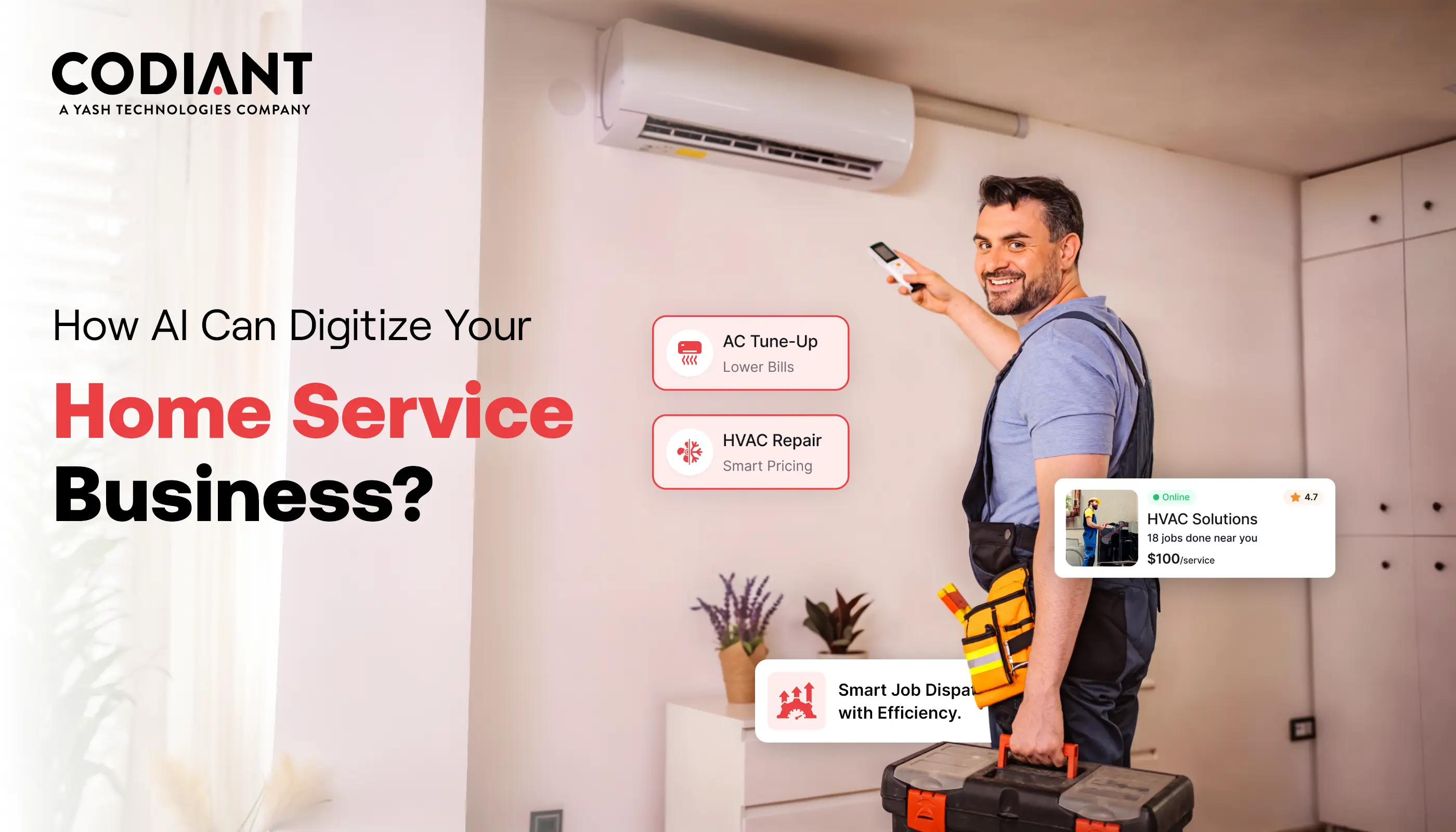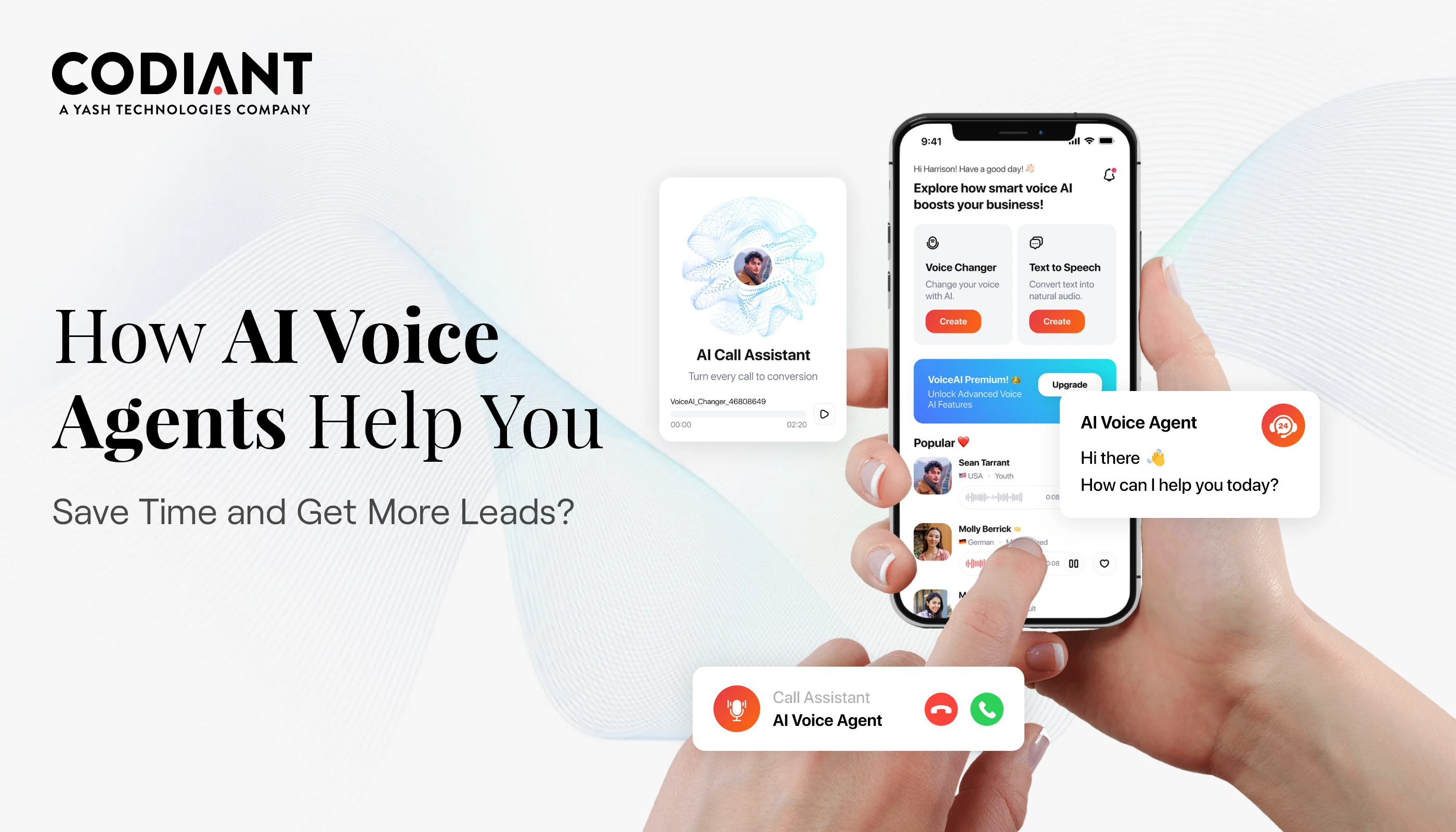Top Enterprise Mobility Management Trends with Benefits
Table of Contents
Subscribe To Our Newsletter

Mobility can’t be overstated. Mobility enables businesses and folks to stay connected, access information, and perform tasks from virtually anywhere. This fosters efficiency, productivity, and adaptability in an increasingly mobile-centric society.
Employees no longer tethered to their desks are increasingly reliant on mobile devices to perform their tasks. This trend has given rise to Enterprise Mobility Management (EMM) with Enterprise Mobility Solutions, a crucial discipline that helps organizations secure, manage, and optimize their mobile fleet.
What is Enterprise Mobility Management?
Enterprise Mobility Management is a comprehensive set of technologies and strategies that an organization uses for management within the network. EMM allows organizations to securely manage and control mobile devices, applications, and data.
- EMM solutions are designed to enhance the productivity of mobile workers while ensuring data security, regulatory compliance, and cost-effectiveness.
- EMM encompasses various aspects of mobile device management (MDM), mobile application management (MAM), and mobile content management (MCM).
- These components work together to create a comprehensive strategy for managing the entire mobile ecosystem within an organization.
Let’s explore the key components of enterprise mobility management.
What are the top trends in Enterprise Mobility Management (EMM) and their benefits?
In 2024, the top trends in EMM include embracing Bring Your Own Device (BYOD), leveraging faster internet technologies like 5G and Wi-Fi 6, integrating AI assistants and chatbots, adopting wearable tech, and utilizing hybrid cloud technology. These trends enhance productivity, security, and flexibility in the evolving mobile-centric workplace.
5 Enterprise Mobility Trends to Watch in 2024
Businesses need to adapt to changes, especially with the increasing use of smartphones and tablets at work. If companies don’t focus on making their operations mobile-friendly, they might struggle. To stay competitive, it’s important to know and implement some trends in business mobility for 2024:
1. Bring Your Own Device (BYOD):
- Letting employees use their own devices for work can save money and make them more involved.
- Make sure all devices, whether company-issued or personal, have strong security measures.
2. Faster Internet and Wi-Fi:
- The new 5G internet and Wi-Fi 6 bring better connections and faster speeds.
- This helps in the quick and efficient use of online video meetings, cloud storage, and group work applications.
3. AI Assistants and Chatbots:
- Smart software using artificial intelligence (AI) helps with routine tasks and improves customer interactions.
- Expect more progress in voice assistance, making it a regular part of workplace tools.
4. Wearable Tech:
- Wearable devices, like smartwatches, are becoming popular and can boost efficiency at work.
- They also help with data security and improve workplace safety.
5. Hybrid Cloud Technology:
- Hybrid cloud solutions offer flexibility and better services for people working on the go.
- They also provide good protection, adapt well to market changes, and handle data well.
Keeping up with these trends will help businesses stay competitive and succeed in the changing world of mobile-friendly workplaces.
Components of EMM

1. Mobile Device Management (MDM)
This component emphasizes on managing mobile devices including tablets, smartphones, and laptops. Device provisioning, remote monitoring and control, and configuration are major tasks that MDM handles. MDM makes sure that mobile devices strictly adhere to security policies and can be remotely locked (if theft or loss).
2. Mobile Application Management (MAM)
MAM helps manage in-house and third-party mobile applications. It ensures that mobile apps are compliant with security policy. App distribution, updates, and control access of corporate data are major tasks of MAM.
3. Mobile Content Management (MCM)
MCM focuses on securing and managing corporate data accessed and stored on mobile devices. It includes features like data encryption, secure document sharing, and access controls to safeguard sensitive information.
4. Mobile Identity and Access Management (IAM)
IAM is crucial for EMM, as it ensures that only authorized users can access corporate resources from mobile devices. Multi-factor authentication, single sign-on (SSO), and identity federation are commonly used techniques.
After understanding of enterprise mobility management and its components, let’s dive deep into the top trends of EMM.
Top 5 EMM Trends to Watch Today
 1. Zero Trust Security Model
1. Zero Trust Security Model
The traditional security perimeter, defined by firewalls and VPNs, is no longer sufficient to protect against modern cyber threats. With the increasing number of remote and mobile workers, the Zero Trust security model has gained prominence.
Zero Trust assumes that no user or device, whether inside or outside the corporate network, can be trusted by default. In EMM, this translates to continuously verifying the identity of users and the security posture of their devices before granting access to corporate resources.
- EMM solutions are now equipped with advanced authentication methods, multi-factor authentication (MFA), and continuous monitoring to ensure that only authorized and secure devices gain access.
- Zero Trust EMM not only enhances security but also aligns with the evolving work environment where employees work from various locations and devices.
- Additionally, behavioral analytics and AI-driven anomaly detection help identify and respond to suspicious activities in real time.
2. Unified Endpoint Management (UEM)
The newest generation of IoT devices, smartphones, tablets, and laptops has complicated EMM. Unified Endpoint Management (UEM) is a trend that aims to simplify the management and security of diverse endpoints through a single, integrated platform.
- With UEM, organizations can manage and secure all endpoints from a centralized console, streamlining tasks like provisioning, patching, and monitoring.
- This trend eliminates silos between different management solutions and ensures a consistent approach to security and compliance across all devices.
- UEM platforms also often include features like over-the-air updates, which are crucial for keeping devices up to date with the latest security patches and software versions, thereby reducing vulnerabilities.
3. Edge Computing and Mobile Edge Computing (MEC)
Edge computing is an emerging trend that brings computational power closer to the data source, reducing latency and improving real-time processing capabilities. EMM plays a vital role in securing and managing the devices and applications that interact with edge computing infrastructure.
- Mobile Edge Computing (MEC) is a subset of edge computing that focuses on delivering computing resources to the edge of the cellular network, often within close proximity to mobile users.
- With MEC, mobile devices can offload processing tasks to the edge, enabling faster response times for applications and services.
- Moreover, EMM solutions help ensure the security of data transmitted to and from edge devices, protecting against potential threats at the edge.
As edge computing and MEC continue to gain traction, EMM must adapt to support these technologies and provide secure connectivity for mobile devices at the edge.
4. IoT Device Management
IoT devices including wearables, sensors, and industrial equipment require management and security. EMM streamlines the control and monitoring of IoT-connected devices. This centralized method enhances the scalability, security, and reliability of IoT systems.
- EMM solutions are extending their capabilities to manage and secure IoT devices, ensuring that they are compliant with corporate policies and protected from cyber threats under Iot application development.
- This trend involves features such as device enrollment, remote management, and secure communication for IoT devices.
- Additionally, EMM platforms offer insights into IoT device performance and data usage, helping organizations optimize their IoT deployments.
5. Enhanced User Experience
As organizations recognize the importance of employee satisfaction and productivity, EMM solutions are placing a greater emphasis on enhancing the user experience. Employees expect seamless access to corporate resources from their mobile devices, without compromising security.
- Modern EMM solutions are designed to provide a frictionless user experience, allowing employees to work efficiently while adhering to security policies. This includes features like single sign-on (SSO), adaptive authentication, and user-friendly mobile app interfaces.
- Furthermore, EMM platforms are leveraging AI and analytics to gain insights into user behavior, enabling organizations to make data-driven decisions that enhance the mobile experience.
- By prioritizing user experience, EMM not only boosts employee productivity but also encourages compliance with security protocols.
All these are the latest EMM trends that would help bring digital transformation to your business operations.
In addition to this, Enterprise Mobility Management is evolving to meet the changing needs of organizations in an increasingly mobile and remote world.
The evolution of EMM from a focus with its enterprise mobility benefits on device management to a comprehensive approach encompassing application and content management, identity and access management, and cost optimization reflects the changing demands of the modern workplace with cost of mobile app development.
Let’s understand how EMM has evolved in the past few decades.
Overview of EMM Evolution
With technological advancements, EMM has evolved from its early focus on device control to a holistic approach encompassing mobile applications, content, and security.
Here is a quick overview of EMM evolution:
Emergence of BYOD (Bring Your Own Device)
The early days of EMM were largely driven by the rise of BYOD policies, where employees brought their personal devices to work.
While this offered flexibility, it has also introduced security challenges. EMM solutions were initially developed to address these concerns, enabling organizations to manage and secure employee-owned devices.
1. Expansion Beyond MDM
As the mobile ecosystem continued to grow, EMM solutions expanded their capabilities beyond MDM.
They began incorporating MAM and MCM to provide comprehensive management of both devices and the applications and data they accessed. This shift was essential for maintaining data security and regulatory compliance.
2. Integration with Cloud Services
Cloud computing became a dominant force in IT, and EMM solutions followed suit by integrating with cloud services.
his allowed for centralized management, easier scalability, and more flexible deployment options. Cloud-based EMM platforms are now common, offering greater accessibility and real-time updates.
3. User-Centric Approach
With user experience at the forefront, EMM solutions started focusing on providing a seamless experience for employees.
This meant enabling secure access to corporate resources from any device, anywhere, and at any time. User-centric EMM solutions enhance employee productivity while maintaining security.
4. AI and Automation
AI/ML and automation have impacted enterprise mobility management. AI and ML technologies can easily detect threats, automate routine tasks, and provide predictive analytics for improved decision-making.
Conclusion
The top five EMM trends deliberated – Zero Trust security, Unified Endpoint Management (UEM), Edge Computing and Mobile Edge Computing (MEC), IoT Device Management, and Enhanced User Experience – signify significant areas of development and innovation in the field.
EMM focuses on holistic security, user experience, and managing a diverse array of endpoints to enable a flexible and productive workforce. By using these trends in business EMM strategies, organizations can enhance the productivity and efficiency of their mobile staff.
Businesses should use EMM to its full potential and secure the mobile ecosystem. This also helps to get success in the mobile-first future and overcome the challenges.
So, don’t wait any longer to secure your mobile devices and empower your workforce.
Contact us today to explore our enterprise mobility solutions and take your organization’s mobility strategy to the next level.
We, at Codiant, offer comprehensive solutions to empower your organization’s mobile workforce while ensuring data security and compliance.
With our expertise, your business can embrace mobility with confidence and efficiency.
Featured Blogs
Read our thoughts and insights on the latest tech and business trends
How to Digitize Your Home-Service Business with an AI-Powered Platform
- November 21, 2025
- Home Services
The home-service industry - covering HVAC, plumbing, electrical, and cleaning—has long relied on manual scheduling, phone-based bookings, and paper invoices. But as customer expectations shift toward instant communication and transparency, these traditional processes are no... Read more
How a Voice AI Agent Can Help You Get More Appointments and Leads
- November 17, 2025
- Artificial Intelligence
Missed calls, delayed responses, and lost leads are silent revenue killers for many businesses. In today’s fast-moving market, customers expect instant engagement - and that’s exactly where a voice AI agent for appointment booking steps... Read more
How to Integrate AI in Recruitment and Cut Hiring Time by 70%
- November 13, 2025
- Artificial Intelligence
Recruiting teams face a clear operational challenge: too much manual work and not enough qualified talent reaching the finish line. Even with modern ATS systems, most hiring workflows still depend on human-driven screening, coordination, and... Read more
 1. Zero Trust Security Model
1. Zero Trust Security Model



